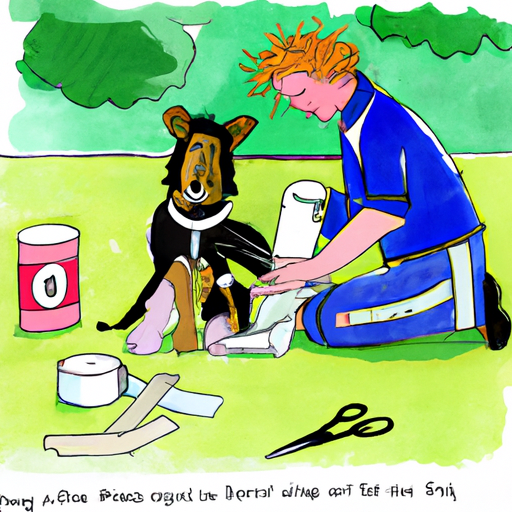As a caregiver, your dog’s health and wellbeing is your top priority. One common issue that may arise is the need to bandage your dog’s leg due to injury or surgical recovery. This guide will walk you through the process, ensuring you can provide the best care possible for your furry friend.
Understanding When a Bandage is Necessary
Before we dive into the “how-to” part, it’s important to understand when a bandage is actually necessary. Not every injury requires a bandage and inappropriate use can do more harm than good.
- Cuts and Wounds: If your dog has a cut or wound that is deep or bleeding heavily, a bandage can help control the bleeding and keep the area clean.
- Post-Surgery: If your dog has had surgery, a bandage may be necessary to protect the surgical site.
- Sprains or Strains: In some cases, a bandage can provide support for a sprained or strained limb.
Remember, if you’re ever unsure, it’s always best to consult your vet.
Preparing to Bandage Your Dog’s Leg
Before you start, gather everything you need. This will help reduce stress for both you and your dog.
- Clean Cloth or Bandages
- Adhesive Tape
- Scissors
- A Muzzle (if necessary)
Remember to approach your dog calmly and reassuringly. If you are stressed, your dog will pick up on it.
How to Apply the Bandage
Now, the moment you’ve been waiting for: how to actually apply the bandage.
- Clean the Wound: If the wound is open, you’ll need to clean it before bandaging. Use warm water and mild soap.
- Apply the Bandage: Start by wrapping the bandage around the wound. Make sure it’s snug, but not so tight that it cuts off circulation.
- Secure the Bandage: Use adhesive tape to secure the bandage. Be sure to cover all edges of the bandage so it doesn’t unravel.
- Monitor Your Dog: Keep a close eye on your dog to make sure they don’t chew or remove the bandage.
Caring for the Bandaged Leg
Once the bandage is applied, your job isn’t over. Proper care for the bandaged leg is crucial for your dog’s recovery.
- Check the Bandage Daily: Look for signs of swelling, discomfort, or the bandage becoming loose or dirty.
- Replace the Bandage as Needed: If the bandage gets wet or dirty, replace it immediately.
- Prevent Chewing or Licking: If your dog is bothering the bandage, consider using a cone or other deterrent.
FAQ
Q: How often should I change the bandage?
A: If the bandage gets wet or dirty, change it immediately. Otherwise, every 2-3 days is a good rule of thumb.
Q: My dog is showing signs of pain, what should I do?
A: If your dog seems in pain or discomfort, it’s best to consult your vet immediately.
Q: My dog won’t stop chewing the bandage, what can I do?
A: Consider using a cone or other deterrent. If the problem continues, talk to your vet.
Remember, when in doubt, always consult your vet. They can provide the best advice and treatment for your dog’s specific situation.



